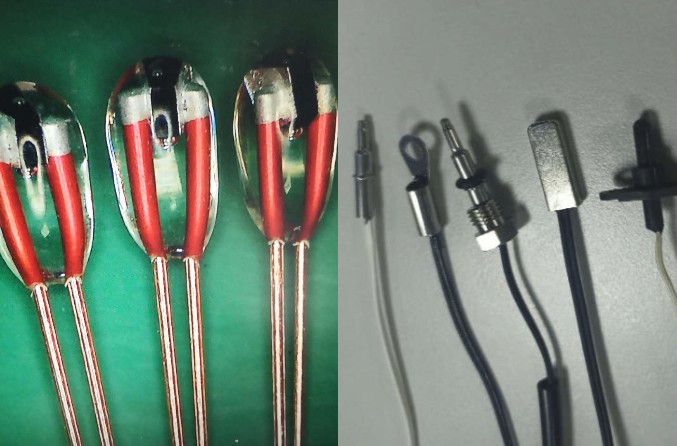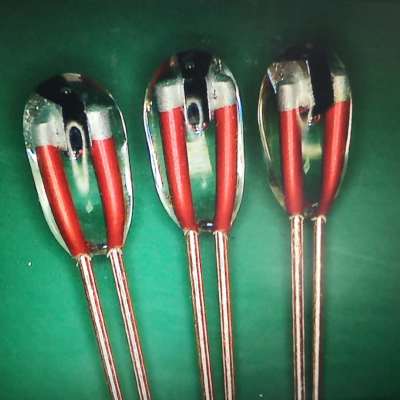In the hyper-connected and ever-demanding world of electronic systems, temperature monitoring is more than a precaution—it's a foundational requirement. From pacemakers and lithium battery packs to high-speed motor control, a failure in temperature sensing can mean catastrophic consequences. At the heart of this vigilant monitoring lies a deceptively small but critical component: the Negative Temperature Coefficient (NTC) thermistor.
Among the various types, glass encapsulated NTC thermistors stand out. Engineered to thrive in extremes, they combine resilience, longevity, and razor-sharp accuracy. These tiny marvels are rewriting the standards of reliability in industries that cannot afford miscalculations.
Understanding Glass Encapsulated NTC Thermistors
Unlike their epoxy-coated counterparts, glass encapsulated NTC thermistors are sealed in a robust layer of inert glass. This encapsulation shields the internal semiconductor from environmental assault while maintaining thermal conductivity. The manufacturing process involves sintering high-purity metal oxides, followed by hermetic glass coating—creating a formidable barrier against ingress of moisture, contaminants, and volatile chemicals.
The result is a thermistor that doesn’t just measure temperature—it withstands time, temperature cycles, and corrosive atmospheres with dignified precision.
Stability Under Harsh Conditions
Glass encapsulation isn’t just a superficial protection layer—it’s a bulwark against the elements. These thermistors operate flawlessly in volatile environments, from cryogenic chambers at -55°C to combustion zones nearing 300°C. Their sealed glass casing is immune to condensation, solvents, oils, and aggressive gases—making them a top pick for aerospace, automotive exhaust systems, and medical sterilization equipment.
Thermal shock? No problem. Rapid temperature fluctuations that would fracture conventional sensors are calmly absorbed by the glass-encased NTC, retaining functionality without recalibration.
Durability Over Time and Cycles
In the world of high-reliability electronics, endurance is everything. Glass encapsulated NTC thermistors don’t degrade easily. Their mechanical strength is exceptional—resisting vibration, mechanical shock, and tensile stress without structural compromise. They maintain stable resistance values across millions of operational cycles.
Unlike polymer-based thermistors that age, swell, or crack, these devices show minimal drift, even after prolonged exposure to heat and humidity. Their ruggedness makes them indispensable in long-lifecycle applications such as industrial automation controls and high-altitude avionics.
Precision and Accuracy in Critical Applications
Accuracy is non-negotiable in sectors like healthcare and aerospace. Glass encapsulated NTC thermistors boast tight resistance tolerances—often within ±1% or better—and exhibit minimal resistance deviation across wide temperature ranges. Their swift response time ensures real-time thermal feedback, essential in systems like ventilators or laser diode controls.
In automotive systems, they help manage battery packs and engine temperature with millisecond-level responsiveness. In medical diagnostics, even slight temperature misreadings can skew results—making the dependability of these thermistors indispensable.
Glass encapsulated NTC thermistors
Why Glass Encapsulation Matters for Design Engineers
Design engineers require components that fit into tight spaces, function reliably under duress, and require minimal maintenance. Glass encapsulated NTC thermistors deliver on all fronts. Their small form factor and axial, radial, or SMD mounting options make them exceptionally versatile.
More importantly, they reduce design headaches by eliminating concerns related to long-term drift or encapsulant degradation. Whether embedded in a heat exchanger or nestled beside a lithium cell, their behavior remains predictable—something every engineer values.
Recommended Product: Glass Encapsulated NTC Thermistor
The Glass Encapsulated NTC Thermistor exemplifies the qualities discussed above. Built with ultra-stable materials and a hermetically sealed glass body, this sensor is engineered for precise thermal readings in the harshest of conditions.
Key features include:
- Operating temperature range: -55°C to +250°C
- Resistance tolerance as low as ±0.5%
- Fast response time (≤3 seconds in liquid medium)
- Excellent resistance to thermal and mechanical shock
Ideal for use in medical catheters, exhaust gas monitoring, and lab instrumentation, the Thermistor delivers top-tier performance without compromise.
Conclusion
Glass encapsulated NTC thermistors are not just components—they’re critical sentinels standing guard over the thermal integrity of complex systems. Their unmatched stability, rugged durability, and precise accuracy make them a cornerstone in modern engineering. As the demand for reliable sensing continues to rise, these glass-armored sensors remain a clear-eyed choice for discerning professionals seeking certainty in uncertain environments.








